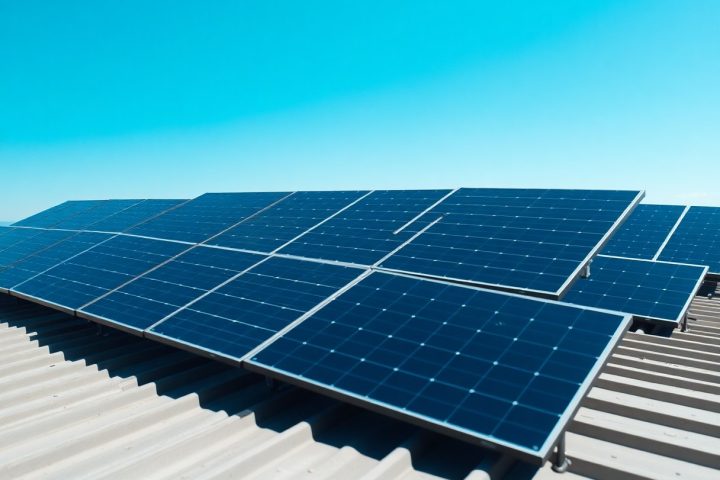It’s vital to understand the technology behind thin-film solar panels if you’re considering them for renewable energy solutions. Unlike traditional crystalline silicon panels, thin-film solar panels use layers of photovoltaic material to convert sunlight into electricity. These lightweight and flexible panels can be integrated into various surfaces, making them an attractive option for both residential and commercial applications. In this post, you’ll discover how thin-film technology works, its advantages, and what you should consider when thinking about investing in solar energy for your needs.
What are Thin-Film Solar Panels?
The thin-film solar panels are a type of photovoltaic technology characterized by their lightweight and flexible designs. Unlike traditional silicon solar panels, thin-film panels use a variety of materials to convert sunlight into electricity. Their versatility makes them suitable for diverse applications, from residential rooftops to large-scale solar farms.
Definition and Types
Before you examine into the specifics of thin-film technology, it’s vital to understand what it encompasses. Here’s a breakdown of some common types:
| Type | Description |
| CIGS | Copper Indium Gallium Selenide; known for high efficiency. |
| CdTe | Cadmium Telluride; cost-effective and widely produced. |
| a-Si | Amorphous Silicon; flexible and lightweight. |
| Organic PV | Uses organic materials; still under research. |
Any of these types might be optimal based on your specific needs and environment.
Comparison with Traditional Solar Panels
What sets thin-film solar panels apart from traditional solar panels mainly lies in their material construction, efficiency, and application. Here’s a brief comparison:
| Thin-Film Solar Panels | Traditional Solar Panels |
| Lightweight and flexible | Heavier and less flexible |
| Lower efficiency (around 10-12%) | Higher efficiency (15-22%) |
| Cost-effective for large applications | Higher upfront cost |
| Better performance in low-light conditions | Less effective in low-light |
In addition to these key differences, thin-film panels generally have a lower energy output per square meter compared to traditional panels. As a result, they may require more space for installation to generate the same amount of electricity. However, their lightweight nature allows for installation on various surfaces, including unconventional spaces.
| Additional Considerations | Implications for Users |
| Rooftop installations | Flexible applications enable diverse setups. |
| Efficiency over time | May degrade faster than traditional panels. |
| Recyclability | Less established recycling processes. |
| Temperature performance | Perform better in high temperatures. |
Principles of Operation
Any understanding of thin-film solar panels begins with their ability to convert sunlight into electricity. These panels utilize a unique construction that allows them to effectively harness solar energy even in low-light conditions. The thin layers of photovoltaic materials used in these panels facilitate the absorption of sunlight, subsequently converting it into usable electric power through a series of mechanisms. The efficiency of this conversion process is what makes thin-film technology an attractive option for various applications.
Photovoltaic Effect
At the heart of thin-film solar panels lies the photovoltaic effect, a process that enables the conversion of light energy into electrical energy. When sunlight strikes the surface of the photovoltaic material, it energizes electrons, knocking them loose from their atoms. This movement of electrons creates an electric current, which can then be harnessed for power consumption. The ability of these materials to absorb various wavelengths of light enhances the overall efficiency of energy conversion.
Layer Composition and Structure
Structure is integral to the performance of thin-film solar panels, as it defines how each layer interacts with light and facilitates energy conversion. Typically, these panels comprise several ultra-thin layers of semiconductor materials, such as amorphous silicon, cadmium telluride, or copper indium gallium selenide. Each layer plays a distinct role in maximizing light absorption and electrical conductivity, allowing for a compact and flexible design that is advantageous for various installations.
The layer composition influences how well your thin-film solar panels collect and convert sunlight. For instance, the type of semiconductor used determines the wavelengths of light that can be effectively absorbed. Additionally, the arrangement of these layers impacts the overall efficiency and durability of the panel. By understanding these structural components, you can better appreciate why thin-film technology is favored for both large-scale and residential applications.
Manufacturing Process
Clearly, the manufacturing process of thin-film solar panels involves several key steps to produce efficient and lightweight photovoltaic cells. The process begins with preparing substrates, followed by the deposition of thin-film materials in layers. Each layer plays a specific role in converting sunlight into electricity, and attention to detail at this stage can significantly influence the performance of the finished panels.
Materials Used
Any combination of materials, such as cadmium telluride, amorphous silicon, and copper indium gallium selenide, is utilized in the production of thin-film solar panels. These materials are chosen for their light absorption properties and cost-effectiveness, allowing for the production of efficient solar cells that can be applied to various surfaces.
Production Techniques
Among the various production techniques used in creating thin-film solar panels, physical vapor deposition (PVD) and chemical vapor deposition (CVD) stand out. These methods enable you to layer materials onto substrates in controlled environments, ensuring uniform thickness and quality of solar cells.
Production techniques like PVD involve vaporizing materials in a vacuum to allow them to condense on the substrate, while CVD uses gaseous precursors that chemically react and deposit thin films. This precision is vital for achieving the desired electrical properties and efficiency in the final product. Techniques like these not only streamline the manufacturing process but also reduce material waste, making thin-film solar panels a more sustainable option for harnessing solar energy.
Advantages of Thin-Film Solar Panels
Keep in mind that thin-film solar panels offer several advantages, making them an appealing option for various applications. Their lightweight design, efficiency in low-light conditions, and lesser land requirements allow for more accessible installations. Additionally, they often have a lower carbon footprint during production, making them a more sustainable choice for eco-conscious consumers.
Cost-Effectiveness
Along with their advantages in installation, thin-film solar panels are generally more cost-effective than their traditional counterparts. Their manufacturing process is often less expensive, allowing for lower initial investments, which can translate into significant savings for you, particularly if you are looking to install solar systems on a budget.
Flexibility and Versatility
On top of their cost-effectiveness, thin-film solar panels provide a level of flexibility and versatility that makes them suitable for a variety of applications. Their lightweight and adaptable nature allows them to be integrated into surfaces that traditional panels may not fit, such as curved or irregularly shaped structures.
It’s important to note that this flexibility extends beyond just the physical installations; thin-film panels can also be applied in innovative ways, such as building-integrated photovoltaics. This means you can incorporate solar energy solutions directly into your building materials, providing aesthetic and functional benefits without compromising design. Such versatility enables you to explore more options in locations that might be challenging for other solar technologies.
Limitations and Challenges
Not all thin-film solar panels perform equally well in varying conditions. They face significant limitations, particularly in efficiency compared to traditional silicon-based solar panels. You may find that these panels require more space to generate the same amount of electricity, which can present challenges in installation. Additionally, factors influencing their performance include:
- Temperature sensitivity
- Light absorption capacity
- Installation orientation
The overall effectiveness of thin-film technology can impact your energy output.
Durability and Lifespan
On the topic of durability, thin-film solar panels tend to have a shorter lifespan compared to more robust alternatives. You may notice that weather-related issues or environmental conditions can affect their performance over time. However, ongoing advancements in materials and manufacturing processes are beginning to improve their resilience.
Efficiency is key when assessing the longevity of your thin-film solar panels. You want to ensure they can withstand extreme conditions while maintaining their energy-collecting capabilities. Regular inspections and proper maintenance can also play a role in extending their lifespan and ensuring you get the most out of your investment.
Applications and Future Prospects
Unlike traditional solar panels, thin-film solar panels are lightweight and flexible, making them versatile for a wide range of applications. You can see them integrated into building materials, used on vehicles, and in portable energy products. As technology advances, these panels are likely to become even more efficient and accessible, playing a significant role in a transitioning energy landscape.
Residential and Commercial Use
Future advancements in thin-film solar technology will make it easier for you to harness solar energy in both residential and commercial settings. Their adaptability allows for installation in various locations, ensuring you can meet your energy needs effectively.
Innovations on the Horizon
By exploring next-generation materials and techniques, the solar industry is poised for significant breakthroughs that could enhance performance and sustainability. You may soon benefit from lighter, more efficient, and less expensive thin-film solar panels that integrate seamlessly into your lifestyle.
Residential applications stand to gain from innovations in thin-film technology, paving the way for more efficient energy production right at home. You could consider options like solar shingles, which blend with your roofing materials, or portable solar chargers for your devices. As research continues to push the boundaries, you might find exciting new possibilities for sustainable energy solutions that fit into your everyday life.
Conclusion
Presently, understanding how thin-film solar panels work enables you to appreciate their role in renewable energy. These panels utilize layers of semiconductor materials to convert sunlight into electricity efficiently, allowing you to harness clean energy for your needs. By integrating thin-film technology into your energy solutions, you can benefit from their lightweight design and flexibility, making them ideal for various applications. As you consider renewable options, thin-film solar panels present a viable choice that aligns with your commitment to sustainability and energy efficiency.




